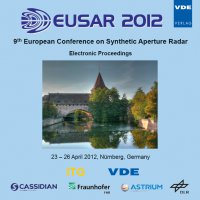Performance of the L- and P-band Subsystems of the F-SAR Airborne SAR Instrument
Conference: EUSAR 2012 - 9th European Conference on Synthetic Aperture Radar
04/23/2012 - 04/26/2012 at Nuremberg, Germany
Proceedings: EUSAR 2012
Pages: 4Language: englishTyp: PDF
Personal VDE Members are entitled to a 10% discount on this title
Authors:
Reigber, A.; Jager, M.; Fischer, J.; Horn, R.; Scheiber, R.; Prats, P.; Nottensteiner, A. (Microwaves and Radar Institute, German Aerospace Center (DLR), Germany)
Abstract:
The F-SAR airborne SAR instrument represents the successor of the E-SAR system of the German Aerospace Center (DLR), which has been extensively used in the last three decades. Its development was triggered by the current demand for data being simultaneously acquired at different wavelengths and polarisations, as well as by the demand for very high resolution in the order of decimetres. F-SAR is a modular development utilising the most modem hardware and commercial off the shelf components. As for E-SAR DLR's Dornier D0228-212 aircraft is the first choice as platform for the new system. Although the F-SAR system is still under development, since some years it is already taking over some of the operational duties of the old E-SAR system. With the recently completed L-band and P-band subsystems, F-SAR is now ready for fully replacing the E-SAR. This paper presents the new L-band subsystems and analyses its performance based on fully polarimetric imagery acquired during recent system test and calibration campaigns. The maiden flight of the new F-SAR P-band system has been postponed to spring 2012, first results will be shown in the conference presentation. Special emphasis is placed on the system calibration and the associated quality control including the achieved spatial resolution and radiometric accuracy in the different bands.


